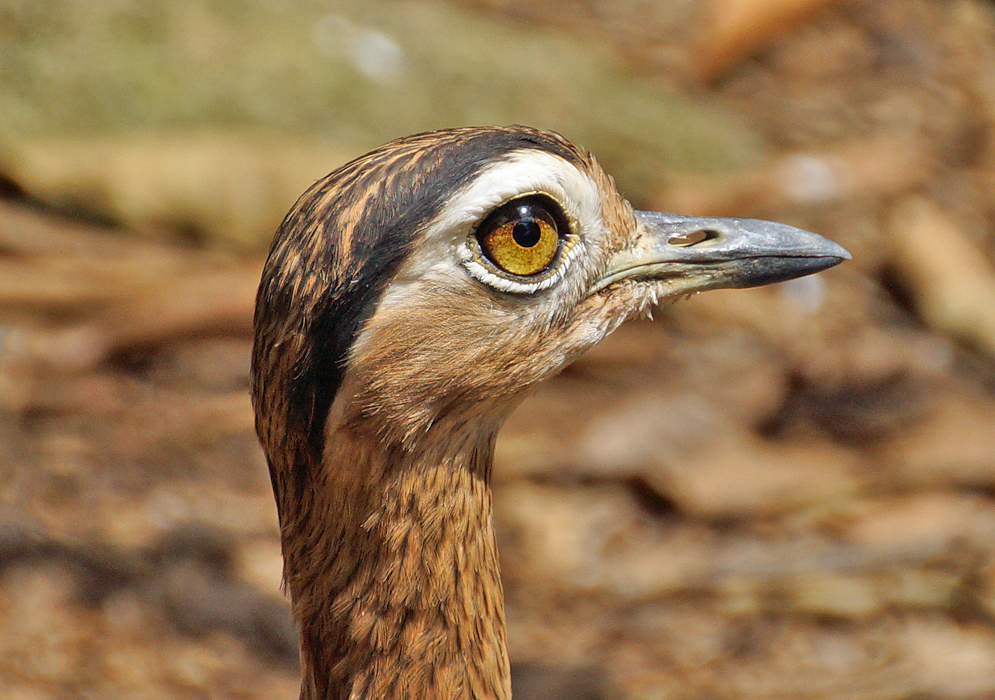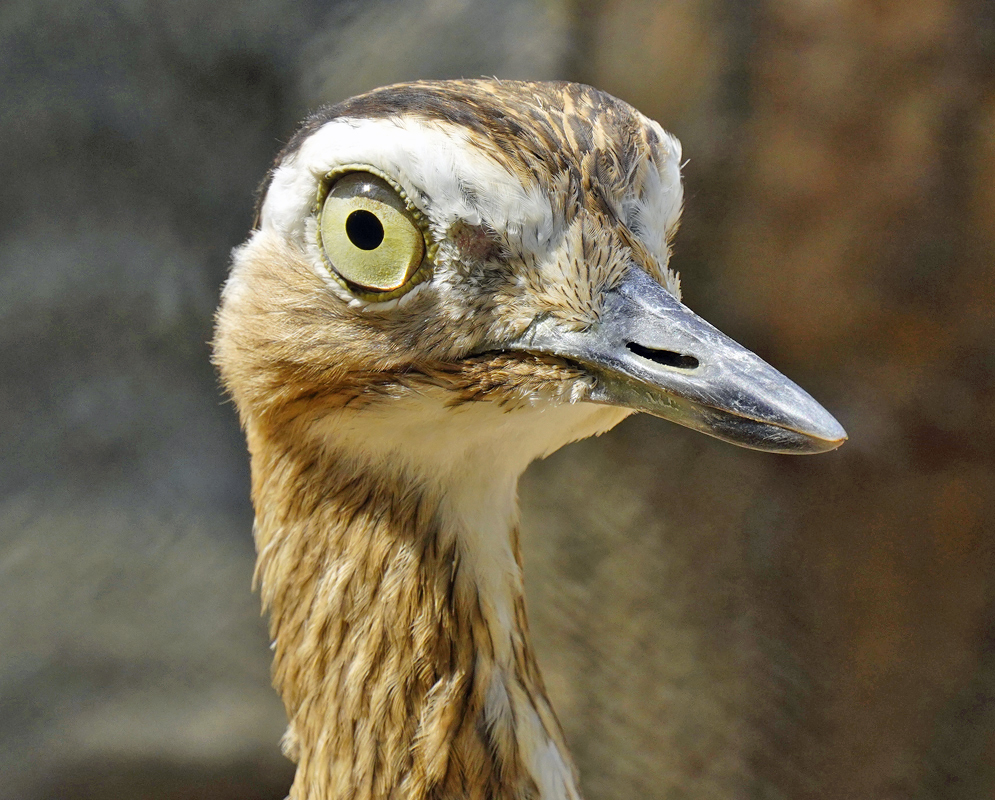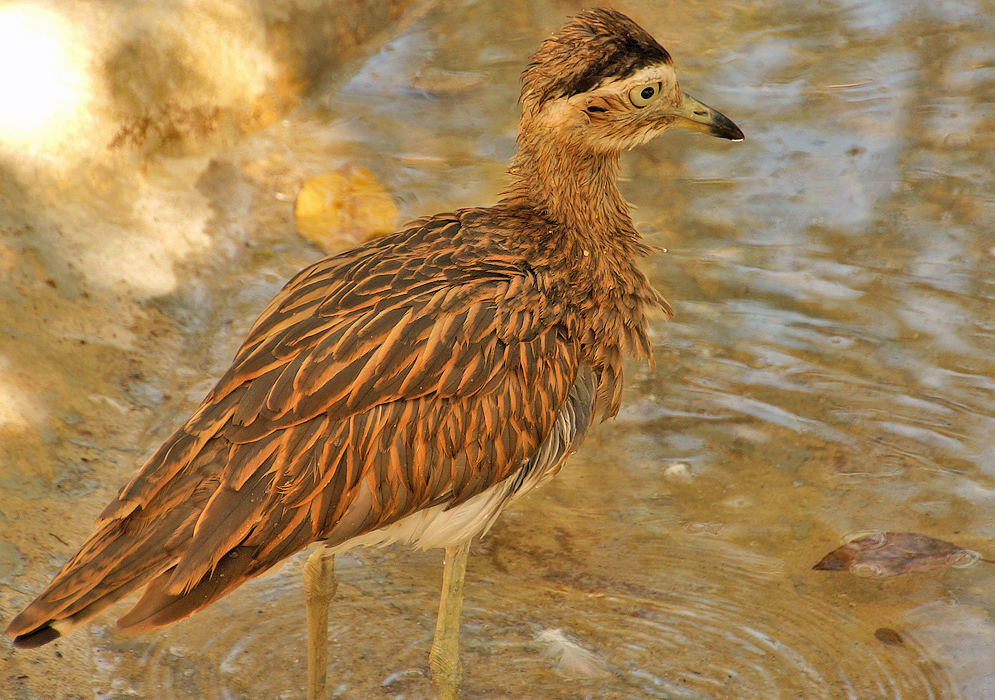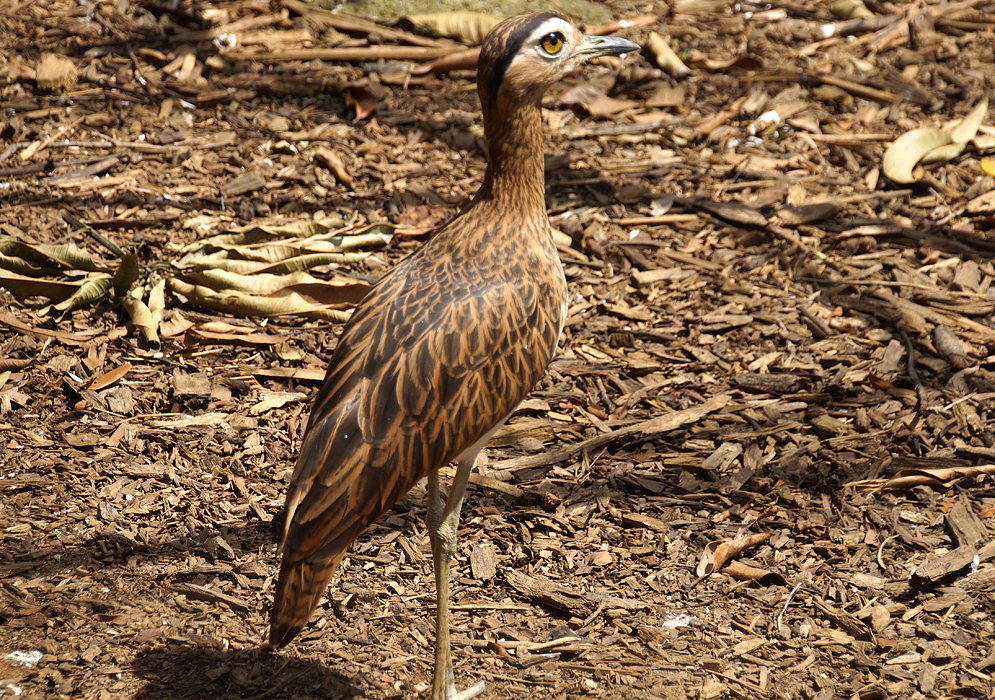This post has 11 Simple Fields-fields attached. Show fields.

The Double-striped Thick-knee, is a medium-large wader that stands out with a striking combination of features: a robust black and yellow bill, large yellow eyes that impart a reptilian look, and a cryptic plumage that blends seamlessly into its surroundings. Adults are about 18 to 20 inches long and weigh approximately 27.5 to 27.7 ounces. Their grey-brown upperparts are finely streaked, transitioning to a paler brown neck and breast, and ultimately to a white belly. The head is notable for a strong white supercilium bordered above by a black stripe, adding to its unique appearance. In flight, the Double-striped Thick-knee reveals a white patch on the dark upperwing and a white underwing with a black rear edge, making it visually striking. The species has a broad geographic range, being a resident breeder in Central and South America. Its habitat stretches from southern Mexico down to Colombia, Venezuela, and northern Brazil. The Double-striped Thick-knee also inhabits Hispaniola and some Venezuelan Caribbean islands, and is an extremely rare vagrant to Trinidad, Curaçao, and the USA. Preferring arid grasslands, savannas, and other dry, open habitats, these birds have adapted well to their environment. Behaviorally, the Double-striped Thick-knee is primarily nocturnal and crepuscular, active mainly at night, which is facilitated by its large, owl-like yellow eyes. During the day, it is often seen standing or sitting quietly, frequently seeking shade under small trees or bushes. This species exhibits a reluctance to fly, relying instead on crouching and camouflage for protection. Their diet consists of large insects and various small vertebrate and invertebrate prey. Interestingly, the Double-striped Thick-knee is sometimes semi-domesticated for its ability to control insect populations, and has benefitted from human activities such as the clearing of woodlands to create pasture. The Double-striped Thick-knee is classified as 'Least Concern' by the IUCN.











